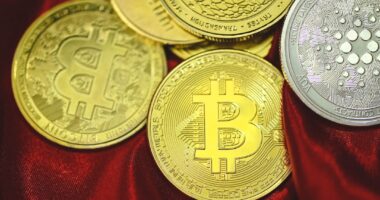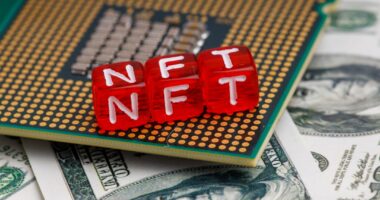NFT characters are unique digital representations of personas, avatars, or figures that exist within the realm of non-fungible tokens (NFTs). Unlike traditional digital assets, which can be easily replicated, NFT characters are distinguished by their uniqueness and ownership, secured through blockchain technology. Each NFT character is encoded with specific metadata that verifies its authenticity and ownership, making it a one-of-a-kind asset in the digital landscape.
This uniqueness is what sets NFT characters apart from other digital creations, allowing them to hold intrinsic value in various online ecosystems. The concept of NFT characters has gained traction in recent years, particularly as the popularity of NFTs surged in the art and gaming industries. These characters can range from simple avatars used in virtual worlds to complex, intricately designed figures that embody specific traits or narratives.
For instance, a character might be designed with unique visual attributes, backstory, and abilities, making it not just a digital image but a fully realized entity within a digital universe. This evolution of character design has opened up new avenues for creators and collectors alike, fostering a vibrant marketplace where these digital beings can be bought, sold, and traded.
Key Takeaways
- NFT Characters are unique digital assets that exist on the blockchain and can represent anything from art to virtual avatars.
- NFT Characters work by using blockchain technology to provide proof of ownership and authenticity, allowing for easy transfer and verification of ownership.
- The value of NFT Characters lies in their scarcity, uniqueness, and potential for resale in a growing digital collectibles market.
- Creating and owning NFT Characters involves minting them on a blockchain platform and storing them in a digital wallet, which requires an understanding of cryptocurrency and blockchain technology.
- Risks and considerations of NFT Characters include high transaction fees, environmental concerns related to blockchain energy consumption, and the potential for copyright infringement and fraud.
How do NFT Characters work?
The functionality of NFT characters is rooted in blockchain technology, which serves as the backbone for their creation and transaction. When an NFT character is created, it is minted on a blockchain—most commonly Ethereum—where it receives a unique token ID and metadata that includes details such as the creator’s information, ownership history, and any specific traits or attributes associated with the character. This process ensures that each NFT character is verifiably unique and cannot be duplicated or forged.
Once minted, NFT characters can be bought, sold, or traded on various marketplaces that specialize in NFTs. Transactions involving these characters are recorded on the blockchain, providing a transparent and immutable ledger of ownership. This means that anyone can verify the authenticity of an NFT character and trace its ownership history back to its original creator.
Additionally, many NFT platforms allow for smart contracts to be integrated into the sale process, enabling creators to earn royalties on future sales of their characters. This feature not only incentivizes creators but also adds a layer of financial sustainability to the ecosystem surrounding NFT characters.
The value of NFT Characters

The value of NFT characters is influenced by several factors, including rarity, demand, and the reputation of the creator. Rarity plays a crucial role; characters that are part of limited editions or possess unique traits tend to command higher prices in the marketplace. For example, an NFT character with a distinctive design or special abilities may attract collectors who are willing to pay a premium for exclusivity.
Demand is equally important; as more individuals become interested in collecting digital assets, the market for NFT characters expands, driving up prices for sought-after items. Moreover, the reputation of the creator can significantly impact an NFT character’s value. Established artists or developers with a strong following often see their creations fetch higher prices due to their credibility and previous successes in the space.
For instance, characters created by well-known game developers or artists who have previously released successful NFT collections may experience heightened demand simply because of their association with quality and innovation. Additionally, the cultural relevance of an NFT character—such as its connection to popular trends or communities—can further enhance its desirability and market value.
Creating and owning NFT Characters
| Metrics | Data |
|---|---|
| Number of NFT Characters Created | 100 |
| Ownership Percentage | 75% |
| Marketplace Value | 500 ETH |
| Number of Owners | 10 |
Creating an NFT character involves several steps that blend artistic creativity with technical know-how. Artists typically begin by conceptualizing their character’s design, personality traits, and backstory. This creative process can involve sketching, digital painting, or 3D modeling, depending on the desired outcome.
Once the design is finalized, the artist must then mint the character as an NFT on a blockchain platform. This process usually requires setting up a digital wallet to store cryptocurrencies and NFTs, selecting a marketplace for minting, and paying any associated gas fees for the transaction. Ownership of an NFT character is established through the blockchain ledger that records all transactions related to that specific token.
When someone purchases an NFT character, they receive a unique token ID that signifies their ownership rights.
Depending on the terms set by the creator, owners may have rights to use the character in various ways—such as incorporating it into games or merchandise—or they may simply hold it as a collectible asset.
Risks and considerations of NFT Characters
While the allure of NFT characters can be enticing, potential buyers and creators must navigate several risks and considerations before diving into this burgeoning market. One significant risk is market volatility; prices for NFT characters can fluctuate dramatically based on trends and demand. A character that commands a high price today may lose value tomorrow if interest wanes or if new trends emerge.
This unpredictability can make investing in NFT characters akin to speculation rather than a stable investment strategy. Additionally, there are concerns regarding copyright and intellectual property rights within the NFT space. Creators must ensure that they have the legal right to mint their characters as NFTs; otherwise, they risk infringing on existing copyrights or trademarks.
Buyers should also be cautious about purchasing characters that may not have clear ownership rights attached to them. The decentralized nature of blockchain technology means that while ownership can be verified through transaction history, it does not inherently guarantee that the creator has not violated any intellectual property laws.
NFT Characters in the art world

In the art world, NFT characters have emerged as a revolutionary medium for artists to showcase their work and connect with audiences in innovative ways. Artists can create unique digital characters that embody their artistic vision while also engaging with collectors who appreciate digital art forms. The ability to mint these characters as NFTs allows artists to sell their work directly to consumers without relying on traditional galleries or intermediaries.
This direct-to-consumer model has democratized access to art and provided artists with greater control over their creations. Moreover, NFT characters have facilitated new forms of collaboration between artists and technologists. For instance, some artists are partnering with game developers to create characters that can be used within virtual environments or video games.
This collaboration not only expands the utility of NFT characters but also enhances their artistic narrative by placing them within interactive contexts. As a result, these characters become more than mere collectibles; they evolve into dynamic entities that can engage audiences in multifaceted ways.
NFT Characters in gaming and entertainment
The gaming industry has been one of the most significant beneficiaries of NFT characters, as they offer players true ownership of in-game assets for the first time. Traditionally, players would invest time and money into acquiring virtual items or characters within games but would never truly own them; these assets were often tied to specific platforms and could be lost if a game was discontinued or if accounts were banned. With NFTs, players can buy, sell, and trade their characters across different platforms while retaining ownership rights secured by blockchain technology.
For example, some games allow players to earn rewards by participating in battles or completing quests using their NFT characters. These rewards can then be traded or sold on secondary markets, creating an economy around gameplay that incentivizes player engagement and investment in their characters.
Furthermore, collaborations between popular franchises and NFT projects have led to limited-edition characters that attract fans from both gaming and collectible communities.
The future of NFT Characters
Looking ahead, the future of NFT characters appears promising as technology continues to evolve and integrate into various aspects of digital life. As blockchain technology matures and becomes more accessible, we can expect an increase in user-friendly platforms for creating and trading NFT characters. This accessibility will likely lead to a surge in participation from both creators and collectors who may have previously been hesitant to enter the space due to technical barriers.
Moreover, as virtual reality (VR) and augmented reality (AR) technologies advance, NFT characters may find new applications beyond traditional screens. Imagine stepping into a virtual world where your unique NFT character interacts with others in real-time or appears alongside you in augmented reality experiences. Such possibilities could redefine how we perceive ownership and interaction with digital assets.
Additionally, as regulatory frameworks around NFTs develop, clearer guidelines will help protect both creators and consumers while fostering trust in this innovative market. In conclusion, while challenges remain in terms of market stability and intellectual property rights, the potential for growth and innovation surrounding NFT characters is vast. As they continue to carve out their niche across art, gaming, and entertainment sectors, these digital entities are poised to become integral components of our increasingly digital lives.
If you’re interested in learning more about NFT characters and their role within the digital ecosystem, you might find the article on ETH News particularly enlightening. This piece delves into the intricacies of NFTs (Non-Fungible Tokens) and explores how these unique digital assets are revolutionizing the way we think about ownership and value in the virtual world. Whether you’re a seasoned investor or just curious about the latest trends in blockchain technology, this article provides valuable insights into the burgeoning world of NFT characters.
FAQs
What is an NFT character?
An NFT character is a digital character that is represented as a non-fungible token (NFT) on a blockchain. NFT characters are unique and cannot be replicated, making them valuable digital assets.
How are NFT characters created?
NFT characters are created by digital artists or creators using digital art software. Once the character is created, it is minted as an NFT on a blockchain platform, which gives it a unique digital signature and makes it one-of-a-kind.
What makes NFT characters valuable?
NFT characters are valuable because they are scarce, unique, and verifiable on the blockchain. Collectors and fans are willing to pay for ownership of NFT characters because of their rarity and the ability to prove ownership through blockchain technology.
Can NFT characters be bought and sold?
Yes, NFT characters can be bought and sold on various NFT marketplaces and platforms. The ownership of an NFT character can be transferred from one person to another through the blockchain, allowing for a secondary market for NFT characters.
Are there copyright issues with NFT characters?
There can be copyright issues with NFT characters if the creator does not have the rights to the character or if the character is based on copyrighted material. It is important for creators to ensure they have the proper rights and permissions before minting NFT characters.





